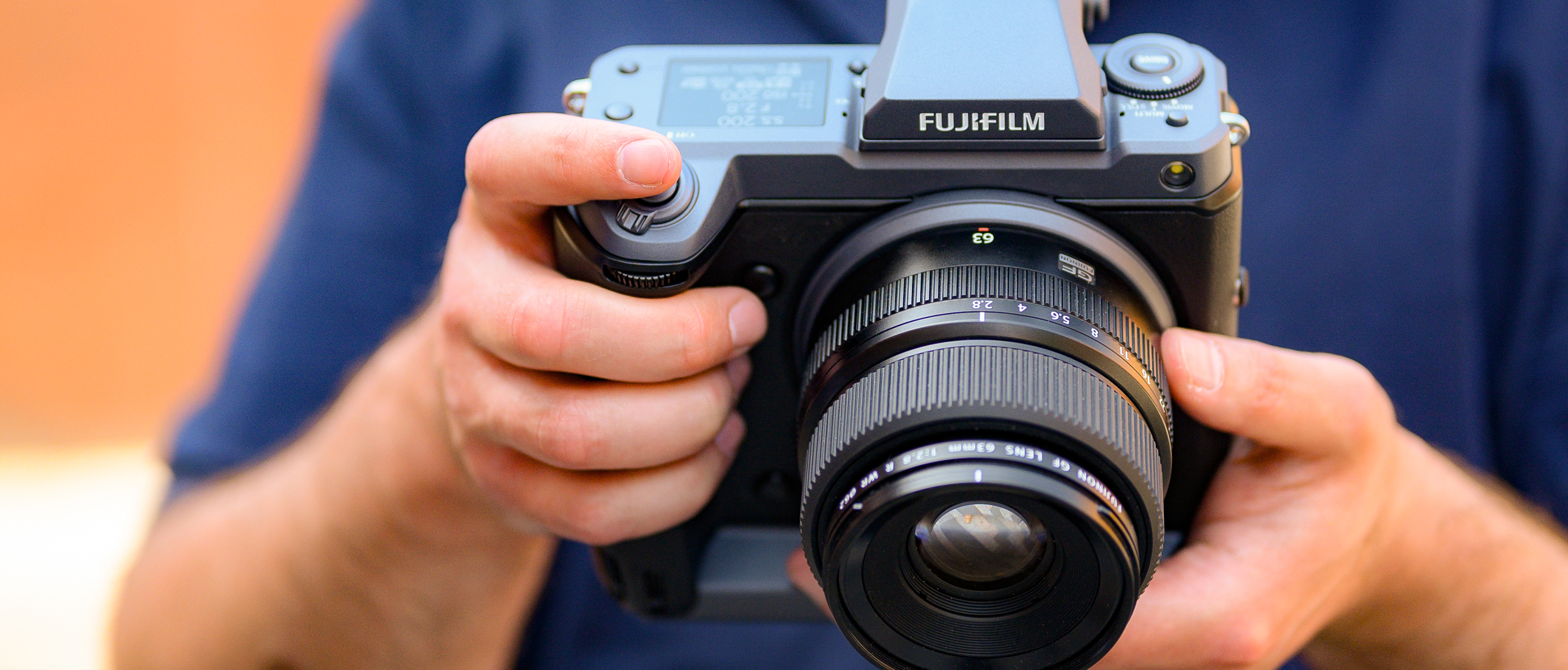Why you can trust TechRadar
Build and handling
- Magnesium alloy construction
- 95 seals for weather resistance
- Integrated vertical grip
While the initial GFX 50S resembled Fujifilm's X-H1 X-series camera, and the GFX 50R an enlarged version of its rangefinder-esque X-E3 model, the Fujifilm GFX 100 has been fashioned with its own vertical grip to give it more of a Canon EOS-1D X Mark II / Nikon D5 pro sports DSLR styling. This grip can't be removed from the body, which is probably just as well considering that it houses the two chunky batteries that power the camera.
The grip is perhaps the weakest point of the GFX 100's overall design. While it's furnished with a secondary shutter release button, along with a set of command dials and other controls that make such a design useful for portrait-orientation shooting, its thinness, together with its lack of sculpting and rubber, and an AF lever that's awkwardly recessed on one side, makes the camera far less comfortable to hold and operate in this mode than in the landscape orientation. It's usable for the occasional shot, but the design seems like something of an afterthought, and nowhere near as refined as on the likes of the Olympus OM-D E-M1 X.
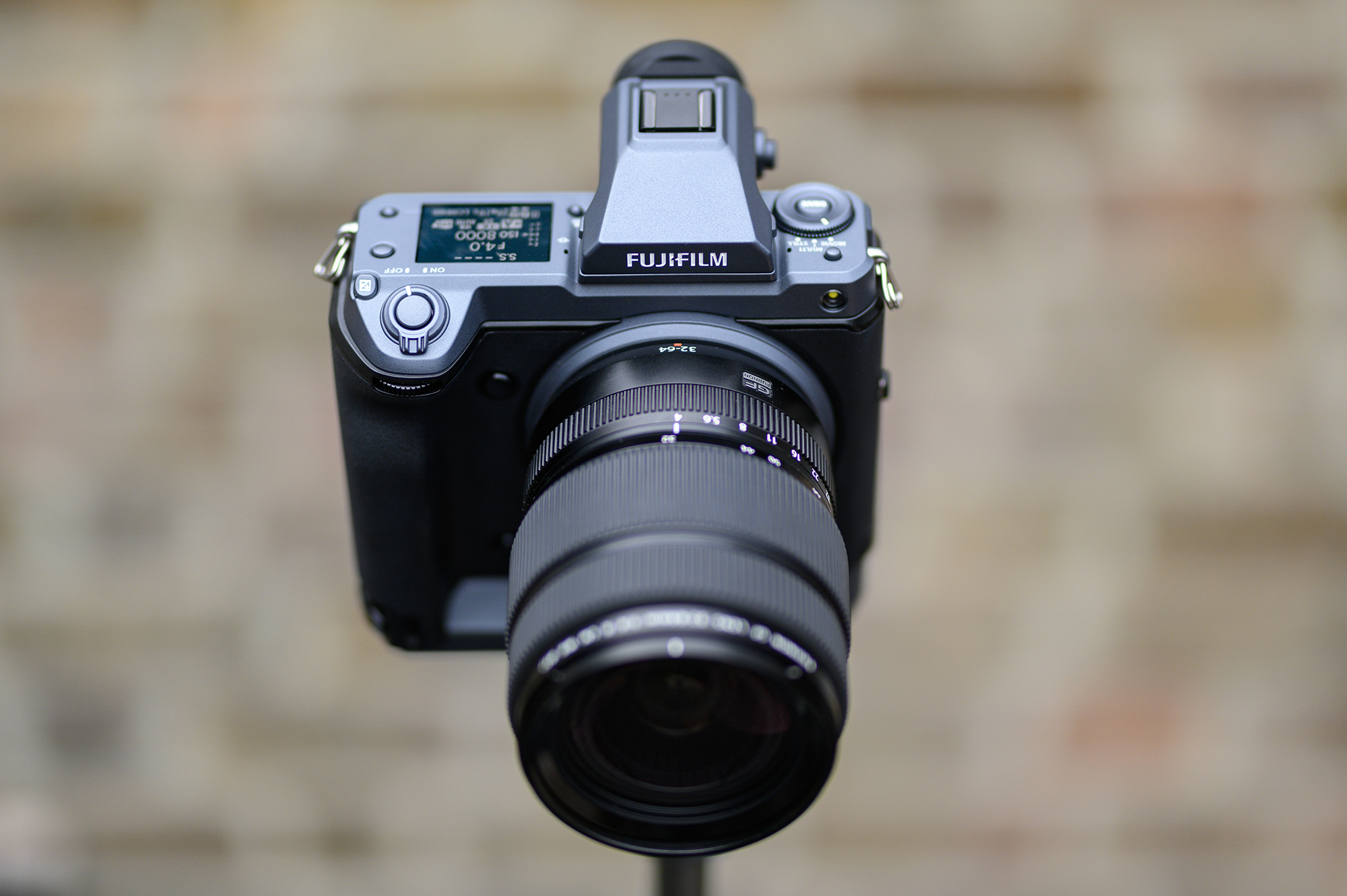
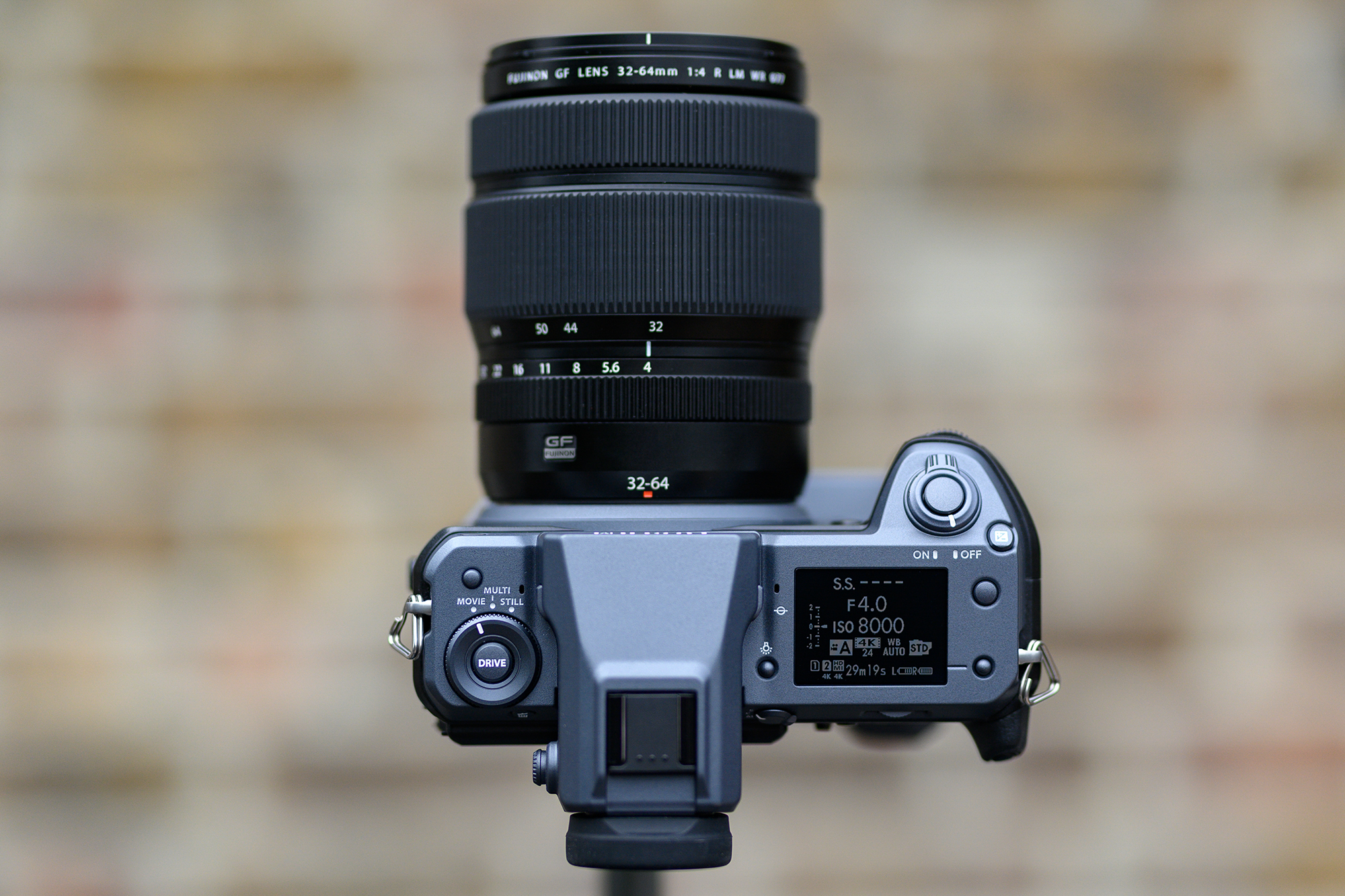
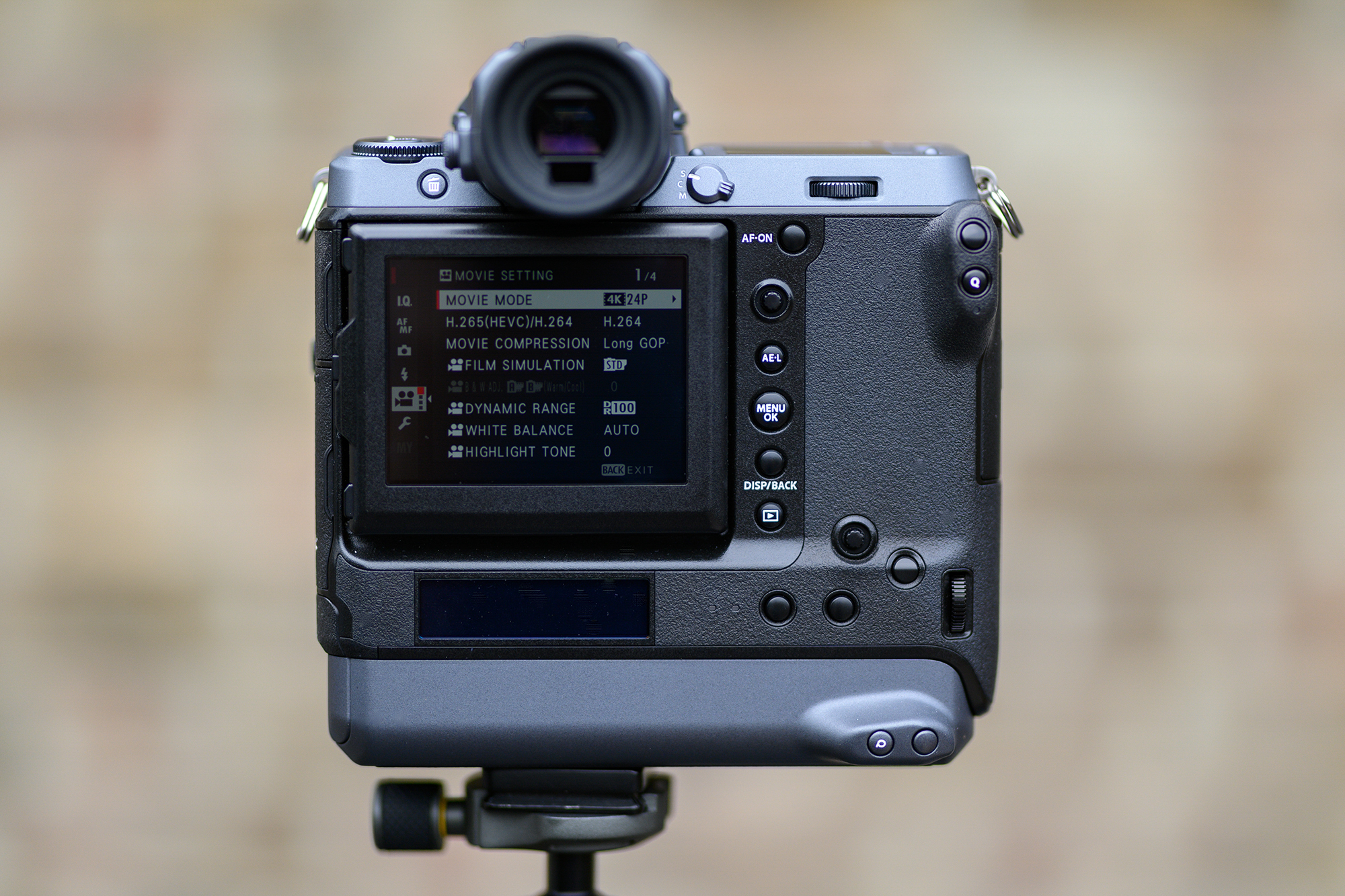
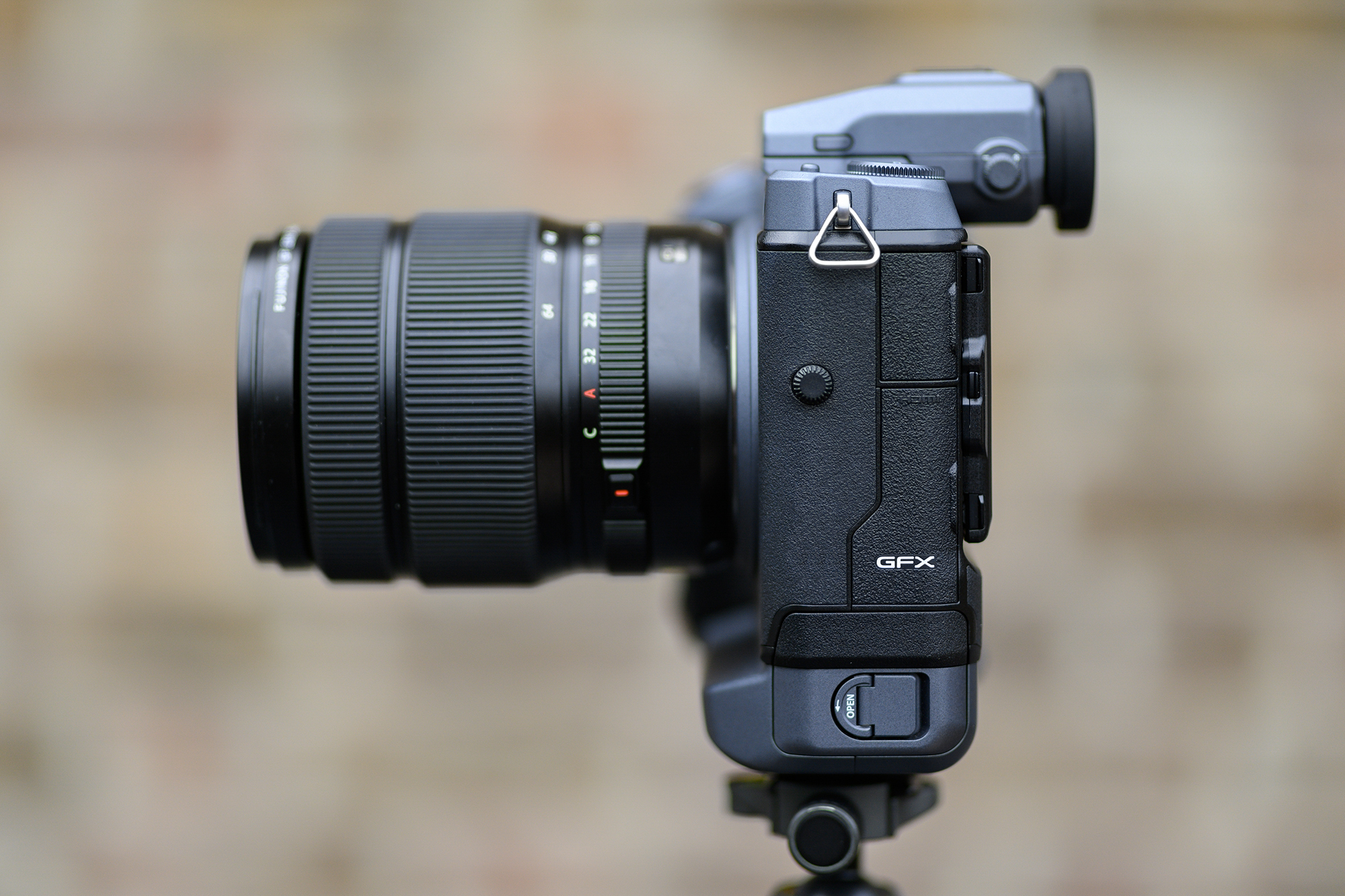
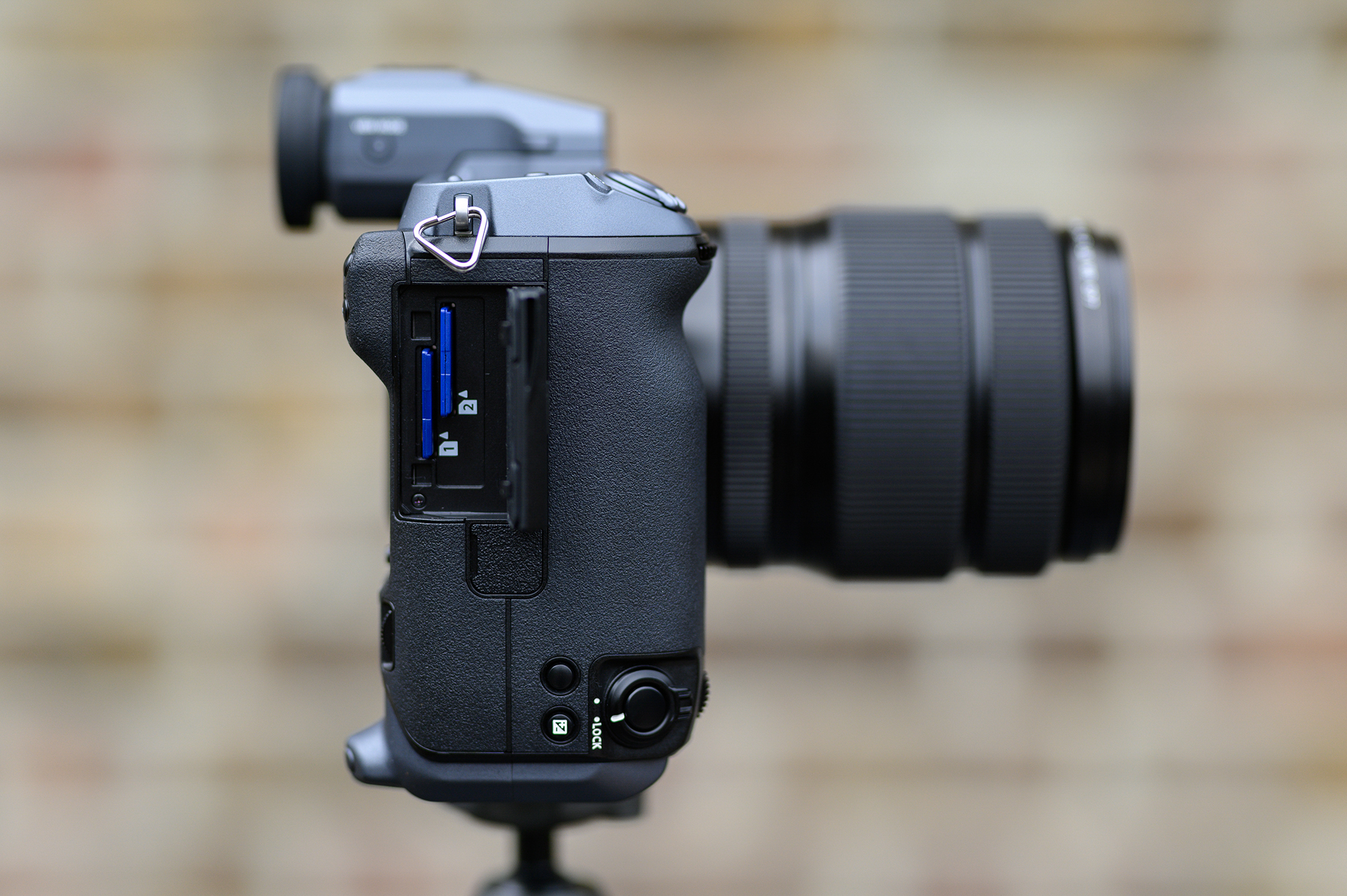
Build quality overall is very high. Much of the GFX 100's body has been finished with a fine-textured rubber, which is perhaps not quite as grippy as the coarser finish on the GFX 50R, but still welcome. There's ample space on the back to get a grip, which is just as well on such a large and weighty body, while the the various buttons all press very positively into the camera. The camera's size, however, means these are spread out, and not quite as easy to quickly move between as they are on the likes of the X-T3 or X-T30.
Perhaps the only real weak spot in terms of build are the doors covering the various ports at the camera's side, or more specifically the thin material that connects these to the camera; it doesn't feel quite as solid as the hinged design on the likes of the Panasonic S1, and while it's not a huge failing, this is a camera that's far pricer than the S1, so expectations are accordingly much higher.
Both of the primary command dials have coarse movements, and press positively into the body, while the AF lever, which is used to navigate the menus and move the AF point around the frame, is great – centralizing all of this control, rather than having a separate menu pad with directional buttons, makes navigation simple. However, it's significantly smaller and not as convenient to nudge than those on the likes of the Canon EOS-1D X Mark II and Nikon D5, which is all the more puzzling when you consider just how much space there is around it.
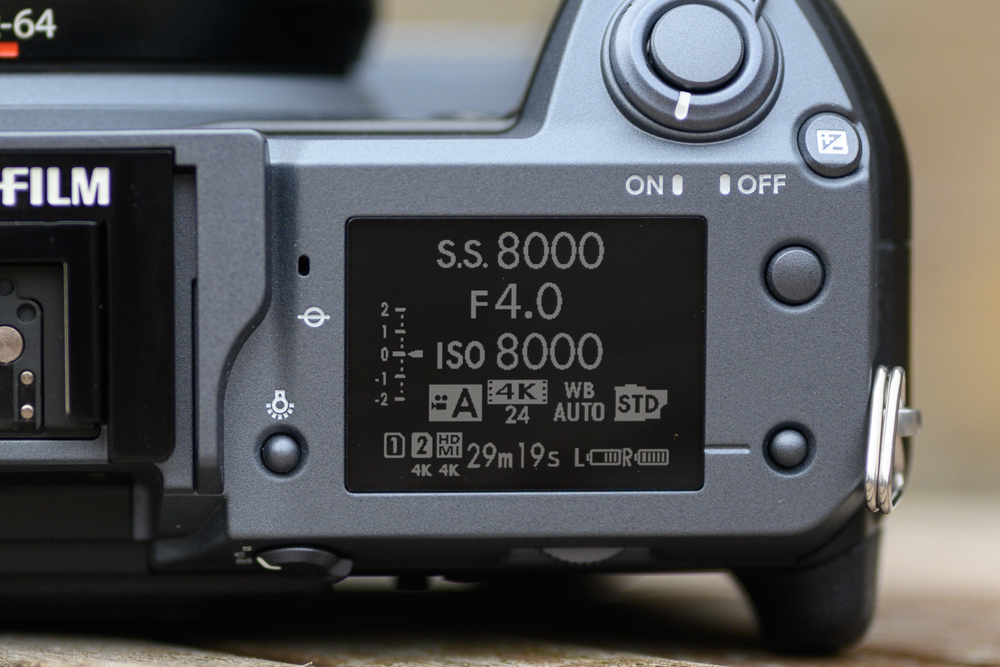
Shooting status
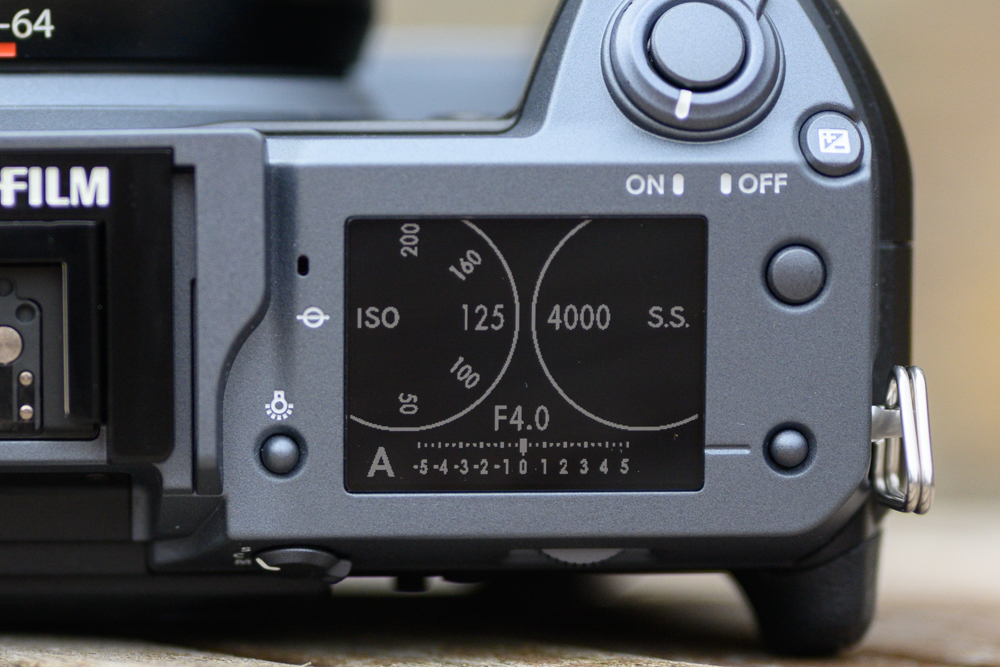
Exposure controls
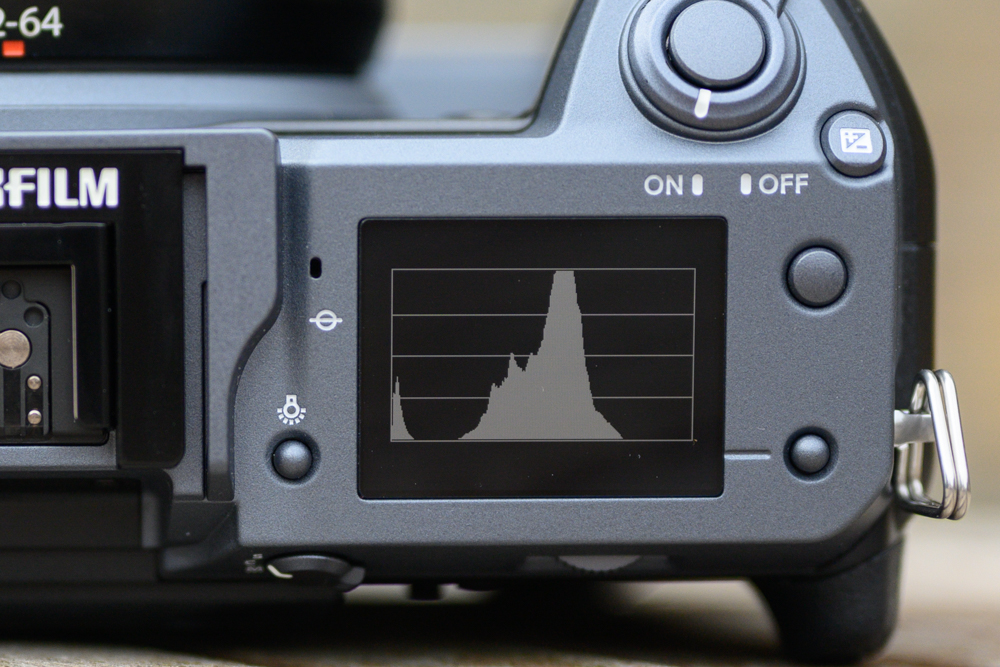
Histogram
Instead of the usual physical dials to regulate exposure compensation, ISO, shutter speed and so on, the GFX 100 enables you to bring up virtual dials on its top-plate LCD screen. You may prefer this, you may not; there's a very small delay as you adjust these, which gives you sense of disconnection that you don't find with the physical dials on other bodies. That said, it's arguably a good use of space, as you can quickly alternate between these and a more traditional shooting/camera settings display, and even a histogram if you want to keep an eye on tonal spread – see the slideshow above.
Autofocus
- Intelligent Hybrid AF (contrast- and phase-detect AF)
- 117 AF points, expandable to 425 points
- Face/Eye Tracking
The Fujifilm GFX 100 is the first GFX camera to sport a hybrid phase- and contrast-detect AF setup, rather than just a contrast-detect system as on the GFX 50S and GFX 50R. Anyone coming from these, or an X-series model, will feel very much at home, with the same Single Point, Zone, Wide/Tracking and All options as on those models, and the option to expand the default 117 points to 425 for finer control.
The difference between the system here and those inside the other GFX models is clear – while those two models focus perfectly well on static subjects, there's noticeably less delay on the GFX 100.
Focusing isn't quite as immediate as on some other mirrorless cameras, but the difference is negligible, and the boost over the older GFX models is easily noticeable. Especially given the size of the lenses for the system, the GFX 100 does impressively well to get a lock on subjects as quickly as it does, and it continues to focus without much hassle when light levels drop.
This is the first GFX camera to sport a hybrid phase- and contrast-detect AF setup
A camera like the Fujifilm GFX 100 will probably not be anyone's first choice for action photography, although the comprehensive X-series level of control over the focusing system, and the option to shoot at 5fps for up to 41 raw frames, means it isn't completely out of the question here either.
Switching between focusing modes is simply a matter of turning a small dial on the rear of the camera, and the AF area mode can be changed through the Q. Menu. The camera generally does well to keep a lock on subjects as they move around the scene, although it does seem to get distracted on occasion, and often loses the subject during continuous bursts of images.
Face and eye detection have received a lot of development from manufacturers in recent years, and the GFX 100 doesn't disappoint here. You can choose between having eye detection on or off, with the eye that's chosen either being decided by the camera or prioritized by the user.
In practice this system works very well, with the focus box appearing over the eye pretty much as soon as the camera has detected the face. This accuracy is confirmed by checking images at 100% later on; the hit rate achieved is impressive, with eyelashes perfectly defined and pupils sharp when appropriate technique is used.
Current page: Build, handling and AF
Prev Page Introduction and key features Next Page Performance and image quality